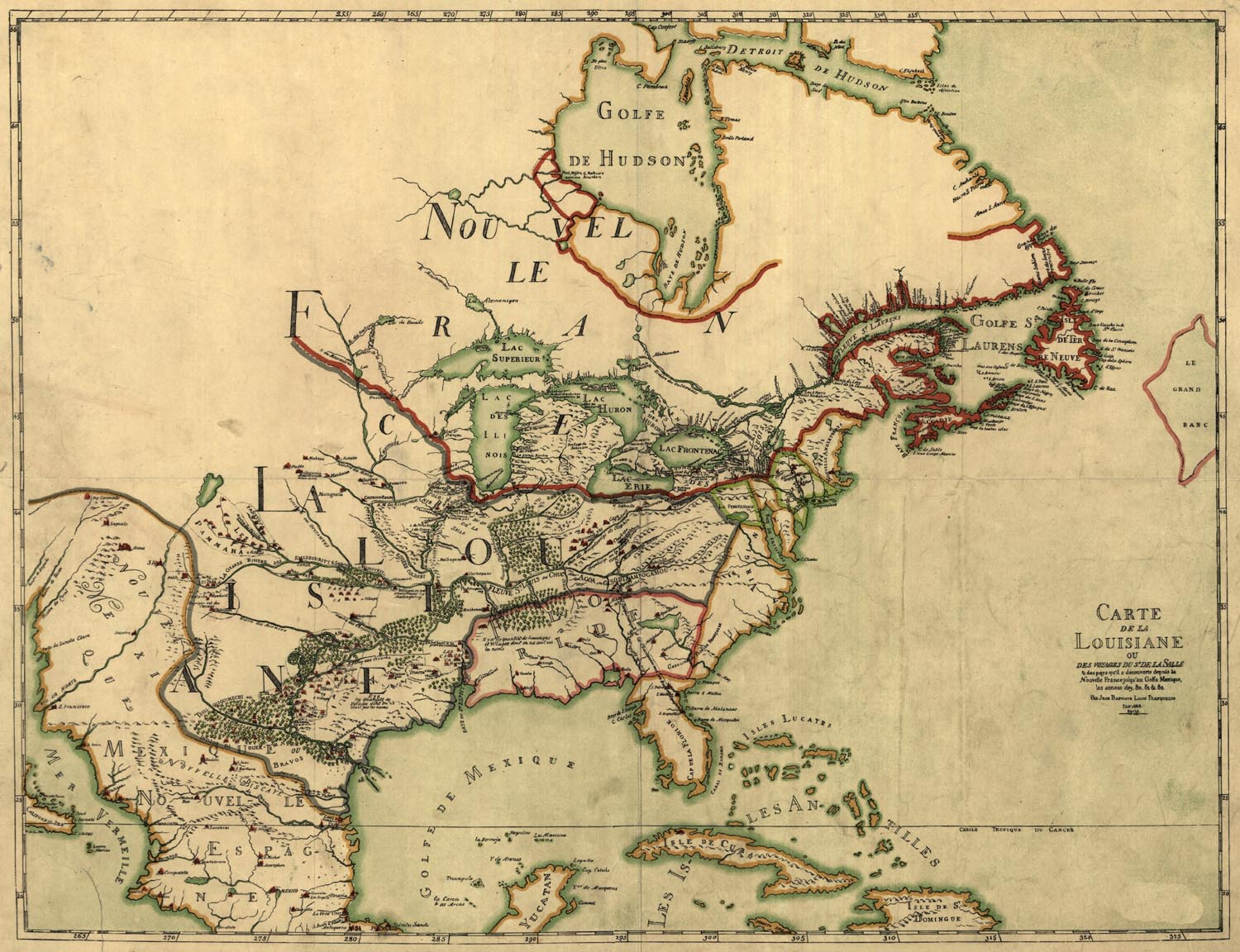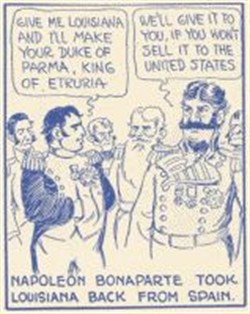
French territories first explored by LaSalle and ceded to Spain for safe keeping during the Seven Years War
After
loosing the French and Indian War, France quickly ceded its
territory in the 'new world' to Spain for safekeeping from Great
Britain.
This surreptitious
cession sets up the secret treaty of San Illdefonso, 41 years
later, the precursor to the French treaty with the United States in
1803 in which Napoleon Bonaparte - acting without the prior
approval of his government or the king of Spain, sold the rights to
govern the Louisiana Territory (very little land came with this
sale) to the new American republic.

Spain agreed to return the
Louisiana territory to France in the secret treaty of San Ildefonso
on the contition that Napoleon promise that he would never cede it
to the United States. After agreeing to those conditions he
ceded the land to the American people two years later in a treaty
that was both unlawful in execution, and deeply misunderstood by
the American people in practice. The treaty recognized the
Native American Indians as the owners of the Lousiana Territory,
and ceded only the lands beneath the towns of New Orleans and St.
Louis to the United States government. The treaty with
Napoleon gave the U.S. government the right to govern the lands
reaching to the Rocky Mountains, but reserved the right of
ownership to the Indian nations. When settlers began to
clammor for 'national expansion' to the Pacific Ocean in the 1840s,
politicians in Washington D.C. were astonished to discover that the
United States did not own the lands of 'Lousiana,' and in order to
acquire those lands for settlement, it would have to enter into
treaty agreements with dozens of American Indian tribes. In
many respects, it was these gross distortions, compounded by a
'rascal citizenry' that led to depredations of Indian resources and
the Indian Wars and the geocide of the American Indian people and
tribal culture in the later half of the 19th century.
Related Events
Related Flashpoints